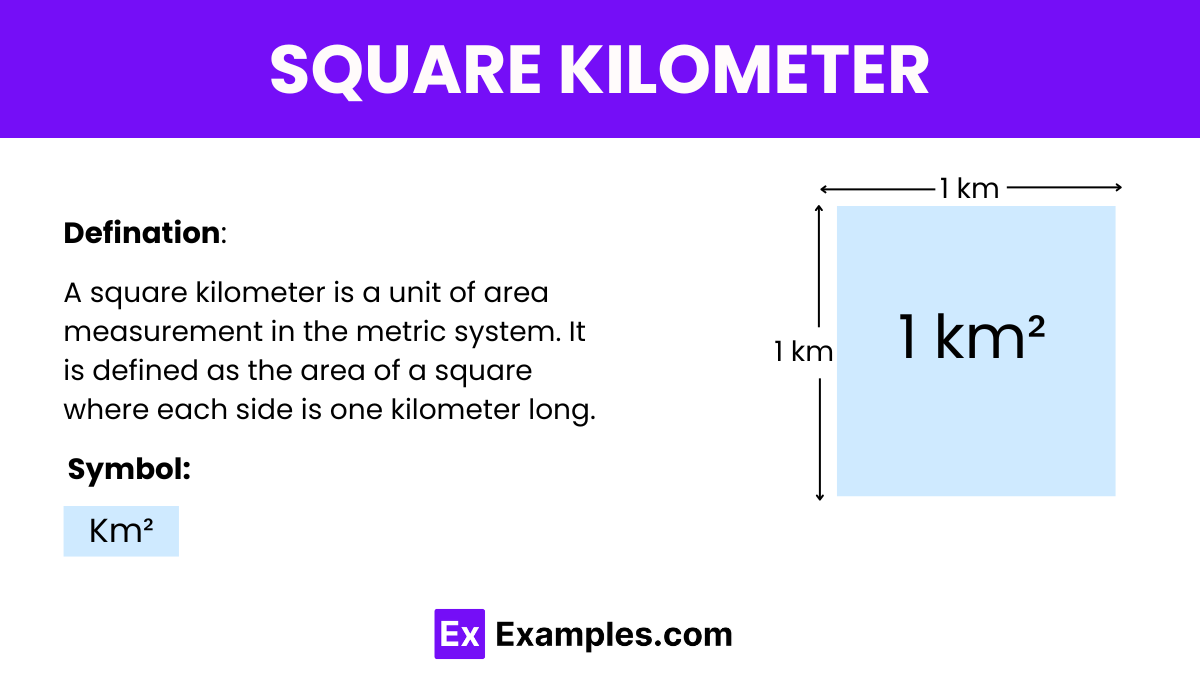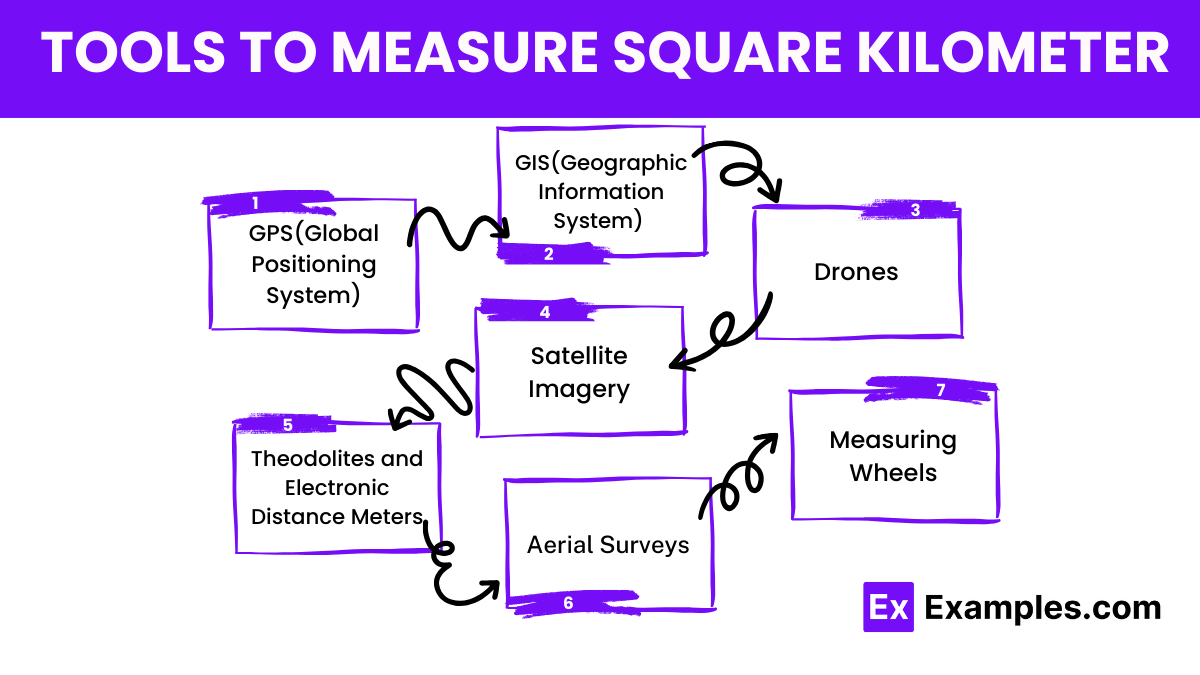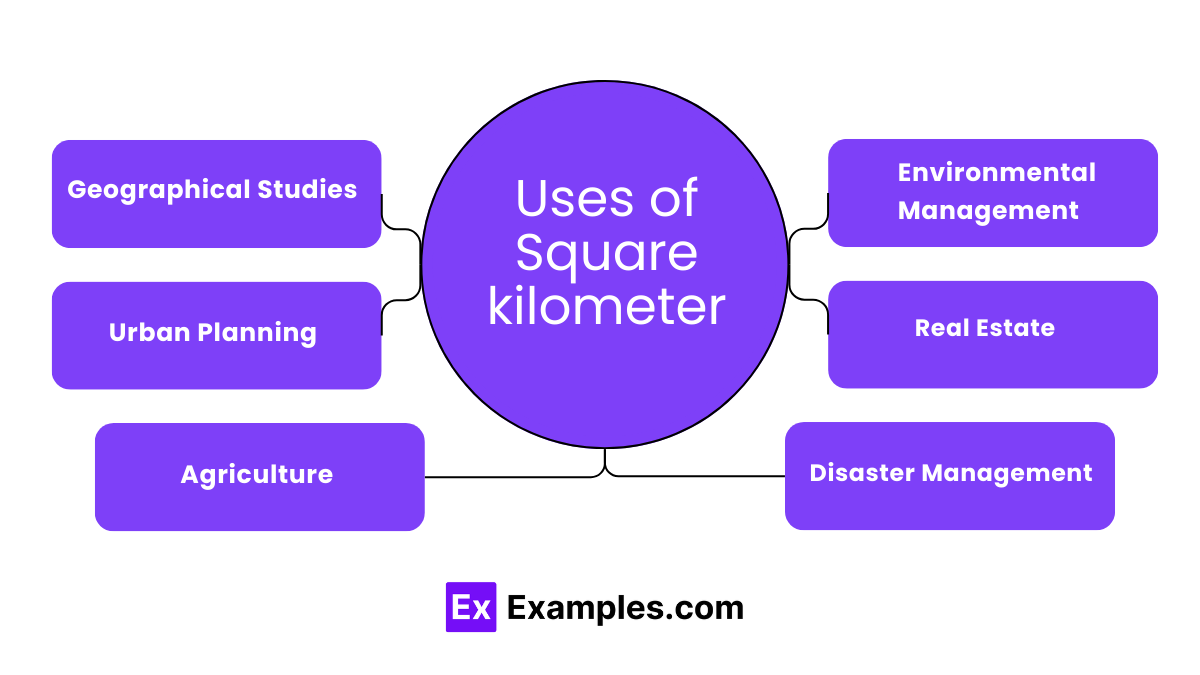How many square meters are there in 1 square kilometer?
1,000
10,000
100,000
1,000,000


A square kilometer is a unit of area measurement in the metric system. It is defined as the area of a square where each side is one kilometer long. This makes it equal to 1,000,000 square meters. Square kilometers are commonly used to measure large areas such as geographic regions or cities.
This unit, represented as km², is widely used for expressing land measurements in geography, mapping, and urban planning, covering territories such as forests, water bodies, and urban areas. One square kilometer equals one million square meters, providing a scale useful for comparing larger geographical spaces

| Aspect | Square Kilometer | Kilometer Square |
|---|---|---|
| Definition | A unit of area equal to the area of a square with sides each one kilometer long. | Describes the shape of an area as a square where each side measures exactly one kilometer. |
| Symbol | km² | km² |
| Measurement | Used to measure area, always 1,000,000 square meters regardless of shape. | Specifically refers to the area of a square with each side measuring one kilometer. |
| Usage | Commonly used in scientific and land measurements to quantify large areas. | Less commonly used; emphasizes the shape (square) of the area being described. |
| Example | Used to describe the area of cities, parks, or any region regardless of its actual shape. | Used when the area is specifically known to be a square, typically in theoretical or planning contexts. |

Here’s a table showing the conversion of square kilometers to other common units of area:
| Area Unit | Conversion from Square Kilometers (km²) |
|---|---|
| Square Meters | 1 km² = 1,000,000 m² |
| Square Centimeters | 1 km² = 10,000,000,000 cm² |
| Square Millimeters | 1 km² = 1,000,000,000,000 mm² |
| Square Miles | 1 km² = 0.386102 square mi |
| Square Yards | 1 km² = 1,195,990 square yd |
| Square Feet | 1 km² = 10,763,910 square ft |
| Square Inches | 1 km² = 1,550,003,100 square in |
| Hectares | 1 km² = 100 hectares |
| Acres | 1 km² = 247.105 acres |
Understanding how to convert square kilometers to other units of area is essential for various applications in planning, agriculture, and environmental management. Here’s a straightforward guide to converting square kilometers to and from other common units of area:

“km²” stands for square kilometer, a unit of area measurement in the metric system. It represents the area of a square with each side measuring one kilometer.
Square kilometers are used to measure large areas such as land regions, bodies of water, and urban spaces. They help in planning, environmental management, and geographical studies.
One square mile is bigger than one square kilometer. A square mile is approximately 2.58999 square kilometers, making it significantly larger when comparing areas of land.
Text prompt
Add Tone
10 Examples of Public speaking
20 Examples of Gas lighting
How many square meters are there in 1 square kilometer?
1,000
10,000
100,000
1,000,000
Convert 2 square kilometers into square meters.
200,000
2,000,000
20,000,000
200,000,000
If a park has an area of 0.5 square kilometers, what is its area in square meters?
250,000
500,000
750,000
1,000,000
How many hectares are there in one square kilometer?
1
10
100
1,000
Convert 0.25 square kilometers to hectares.
2.5
25
250
2,500
A rectangular field has an area of 3 square kilometers and a length of 1.5 kilometers. What is its width?
1 kilometer
1.5 kilometers
2 kilometers
2.5 kilometers
If a city covers an area of 50 square kilometers, how many square meters is that?
5,000,000
50,000,000
500,000,000
5,000,000,000
Convert 1.2 square kilometers to square meters.
1,200,000
12,000,000
120,000
1,020,000
A square plot of land has an area of 16 square kilometers. What is the length of each side of the plot?
2 kilometers
4 kilometers
8 kilometers
16 kilometers
If a region has an area of 0.75 square kilometers, what is its area in square meters?
75,000
750,000
7,500,000
75,000,000
Before you leave, take our quick quiz to enhance your learning!

